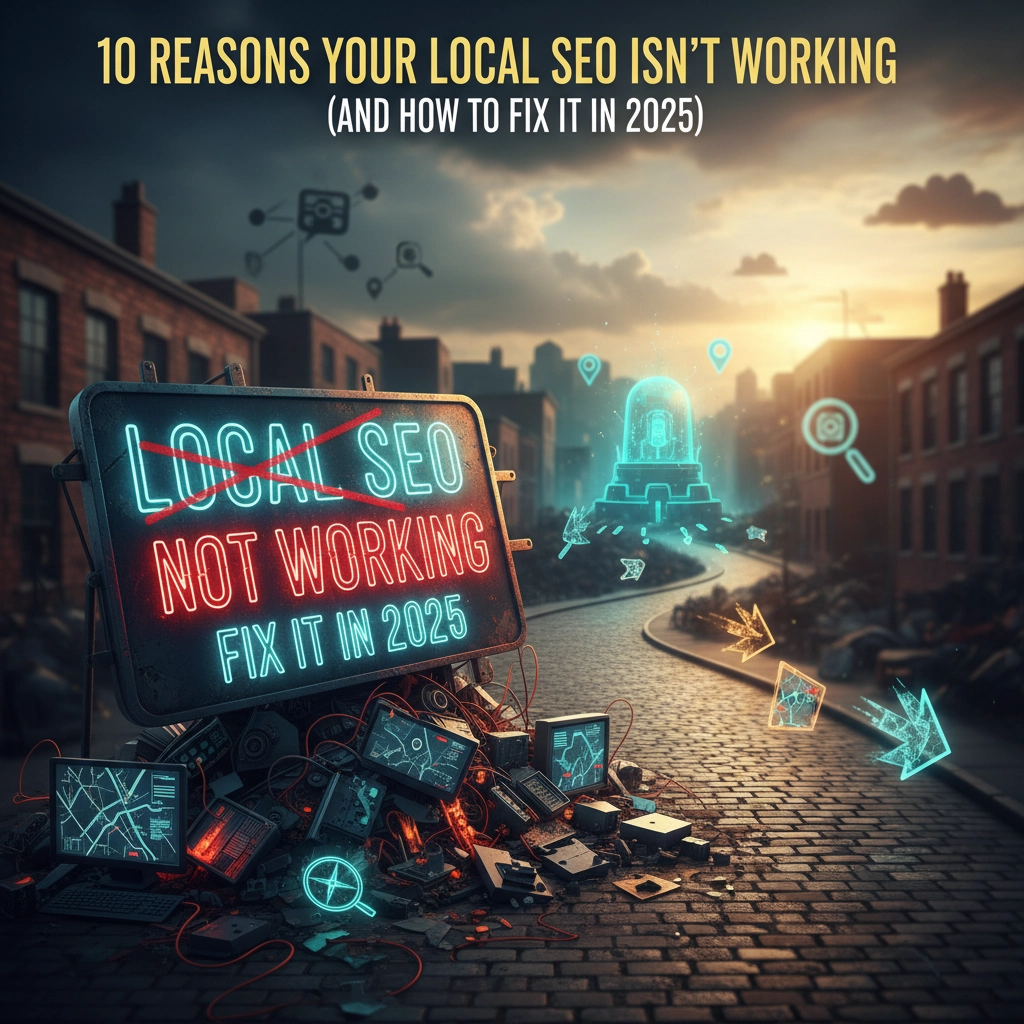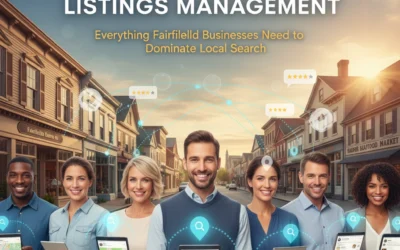Local SEO can be a game-changer for your business, driving qualified customers right to your door. But if you're not seeing results, you're not alone. Many businesses invest time and money into local SEO strategies that simply don't deliver. Here's the truth: local SEO works incredibly well when done right, but most businesses are making critical mistakes that kill their chances of success.
Let's dive into the 10 most common reasons your local SEO isn't working and exactly how to fix them in 2025.
1. Your Business Information Is All Over the Place
The Problem: Your business name, address, and phone number (NAP) are inconsistent across different platforms. Maybe your Google Business Profile says "123 Main St" while your website shows "123 Main Street." These inconsistencies confuse search engines and hurt your credibility.
The Fix: Conduct a thorough audit of everywhere your business appears online. Start with Google Business Profile, then check Yelp, Facebook, Apple Maps, and industry-specific directories. Make sure every single detail matches exactly – including punctuation, abbreviations, and formatting.
2. You're Ignoring Google Business Profile
The Problem: You claimed your Google Business Profile years ago and haven't touched it since. It's missing photos, has outdated hours, and lacks detailed service descriptions. This is like having a storefront with broken windows – it doesn't inspire confidence.
The Fix: Treat your Google Business Profile like your most important marketing channel. Upload high-quality photos regularly, keep your hours current, respond to all reviews, and post weekly updates about your services or business news. The businesses that actively manage their profiles consistently outrank those that don't.

3. You're Targeting Keywords Nobody Actually Searches For
The Problem: You're ranking for keywords that sound good in theory but don't match what customers actually type into Google. Maybe you're a dentist ranking for "oral health maintenance" when people actually search for "dentist near me" or "tooth pain relief."
The Fix: Use keyword research tools to discover what your customers actually search for. Focus on location-based keywords like "[service] in [city]" or "[service] near me." Look at your competitors' rankings and identify gaps where you can compete effectively.
4. Your Website Content Is Stale or Generic
The Problem: Your service pages haven't been updated in months, or worse, they're filled with generic content that could apply to any business in your industry. Search engines favor fresh, relevant content that provides real value to users.
The Fix: Regularly update your service pages with fresh, locally-relevant content. Write about local events, community involvement, or area-specific challenges your business solves. Create location-specific landing pages if you serve multiple areas.
5. Your Website Fails the Mobile Test
The Problem: Your website looks great on desktop but is a mess on mobile devices. Since most local searches happen on mobile, this is killing your chances of converting visitors into customers.
The Fix: Test your website on multiple mobile devices and fix any issues immediately. Ensure your site loads quickly, navigation is easy, and contact information is prominently displayed. Consider that mobile users want information fast – make it easy to find your phone number and address.

6. You're Not Collecting or Managing Customer Reviews
The Problem: You have few reviews, or you're not responding to the ones you do have. Reviews are crucial for local SEO rankings and customer trust, yet many businesses treat them as an afterthought.
The Fix: Actively encourage satisfied customers to leave reviews across multiple platforms. Respond to all reviews – both positive and negative – professionally and promptly. Create a systematic approach to review collection, perhaps by following up with customers via email after service completion.
7. Your Location Pages Are Weak or Nonexistent
The Problem: If you serve multiple locations, you either don't have dedicated pages for each area or your location pages are thin, duplicate content that doesn't provide unique value.
The Fix: Create comprehensive, unique landing pages for each service area. Include local landmarks, area-specific services, customer testimonials from that location, and relevant local information. Each page should feel tailored to that specific community.
8. Technical SEO Issues Are Holding You Back
The Problem: Your website lacks proper schema markup, has broken internal links, or is missing key technical elements that help search engines understand your business.
The Fix: Implement local business schema markup to help search engines understand your business information. Add location-specific title tags and meta descriptions, embed Google Maps on your contact page, and ensure your website has a clear site structure with proper internal linking.

9. Your Market Is Too Niche or Service Area Too Small
The Problem: Sometimes it's not your SEO – it's your market. If you're targeting a very specific niche in a small geographic area, there simply might not be enough search volume to generate significant traffic.
The Fix: Analyze search volume data for your target keywords and location. If demand is genuinely low, consider expanding your service area, broadening your service offerings, or supplementing local SEO with other marketing strategies like social media advertising or partnerships with complementary businesses.
10. You're Flying Blind Without Data
The Problem: You can't measure what you're not tracking. Many businesses invest in local SEO without proper analytics setup, making it impossible to know what's working and what needs improvement.
The Fix: Set up comprehensive tracking using Google Analytics 4, Google Search Console, and local SEO tracking tools. Monitor keyword rankings, website traffic, conversion rates, and phone call tracking. Regular reporting helps you identify trends and optimize your strategy based on real data.
Making Local SEO Work in 2025
The landscape of local SEO continues to evolve, but the fundamentals remain solid. Success comes down to consistency, relevance, and providing genuine value to your local community. The businesses that win are those that view local SEO not as a one-time setup but as an ongoing relationship with their community and customers.
Start by addressing the most critical issues first – typically NAP consistency and Google Business Profile optimization provide the biggest initial impact. Then systematically work through the other areas, measuring your progress along the way.
Remember, local SEO is a marathon, not a sprint. But when done correctly, it's one of the most cost-effective ways to attract qualified customers who are ready to buy. The businesses that commit to doing it right will continue to dominate their local markets while competitors wonder why their efforts aren't paying off.
The opportunity is there – the question is whether you're ready to seize it.





0 Comments